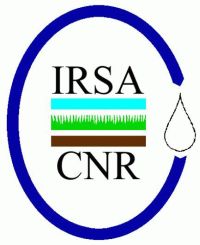
ERCOLE 2014 exercise
23-24.09.2014 - ERCOLE - Emergency Response to Coastal OiL spill Exercise, Ancona (Italy)
As a part of WP 4 , Marche Region and Emilia-Romagna Civil Protection have organized an exercise called ERCOLE (Emergency Response to Coastal Oil spill Exercise). The aim of the exercise was to test the capacity of response on coastal areas after an oil spill happened in central Adriatic, opposite to Marche Region. The exercise began with in a dispatch received from ACCRA Adriatic Coast Control Room Ancona: on 23rd September (approximate time 06:00 pm) “a relatively large quantity of crude oil is leaked into the sea”. Maritime Authorities had put into practice the appropriate actions to control the pollution at sea, the vessels and the task force, rushed to the area to collect the oil as much as possible. After that phase, the Marine Authorities announced that 500 cubic meter of crude oil remains at sea and that, pushed by currents, could reached the coastline. They also sent information about the appearance of and the concentration of oil at sea.
Marche Region launched the Integrated Monitoring System Adriatic (IMSA), in particular exploited the oil spill Forecast Support system (Oill spill FSS) to obtain the trajectory of the spillage. The mathematic model predicted the stranding of the crude oil along Villanova’s shoreline (area of Falconara Marittima – Ancona) at approximately 10:30 am of the 24th September. The Unit “Protection of the sea” decided to organize the response along the coast: it was composed in the preparation of a work area in the site identified by the mathematical model (Villanova’s beach Falconara Marittima-Ancona-). In the morning of September 24th, after oil stranding, the shoreline clean-up techniques were put in place in the work area. The techniques adopted were different according to the characteristics of different polluted substrates present in Villanova’s beach: sandy, granule, pebbles, and riprap. Four different teams applied the appropriate clean-up technique and the related procedure in each substrate’s context. The clean-up was aimed to limit the spreading of the pollution and the ecological impact through reducing the duration of oil contact with the environment. A fifth team have deployed the floating booms to trap the clean-up effluents and with the use of a skimmer were recovered the hydrocarbons on the water surface.
All coastal operations were supported by IMSA, the system is based on a combined and integrated use of different technologies. In particular was composed by a set of cameras that provided images of the shoreline, some mobile devices that provided images of the oil spill (MAR.M.MO system), a radar “oil spill detection” surveyed the spillage, the FSS predicted oil spill’s movement and the AIS surveyed the position and the environmental reliability of the ships in the Adriatic Basin. A control screen was set closed to the working area, in order to view the data, control all processes and test the performance of the entire system.
The active participants at the exercise were Marche Region Unit “Protection of the sea” and Emilia Romagna Region “Civil Protection”.
The observers were representatives of:
- HAZADR project participants: Zadar County, Region of Istria, Institute of Marine Biology from Montenegro, Puglia Region Civil protection, ARPA Puglia;
- Administrative bodies of Marche Region, in charge of civil protection;
- Administrative bodies of Emilia Romagna, in charge of civil protection;
- Italian Coast Guard Authority;
- Administrative bodies of Falconara Municipality in charge of civil protection and rescue;
- Regional bodies (Emilia Romagna Region) in charge of environmental and climatic monitoring ARPA SIMC;
- National Italian bodies in charge of environmental protection (ISPRA).
- Log in to post comments


